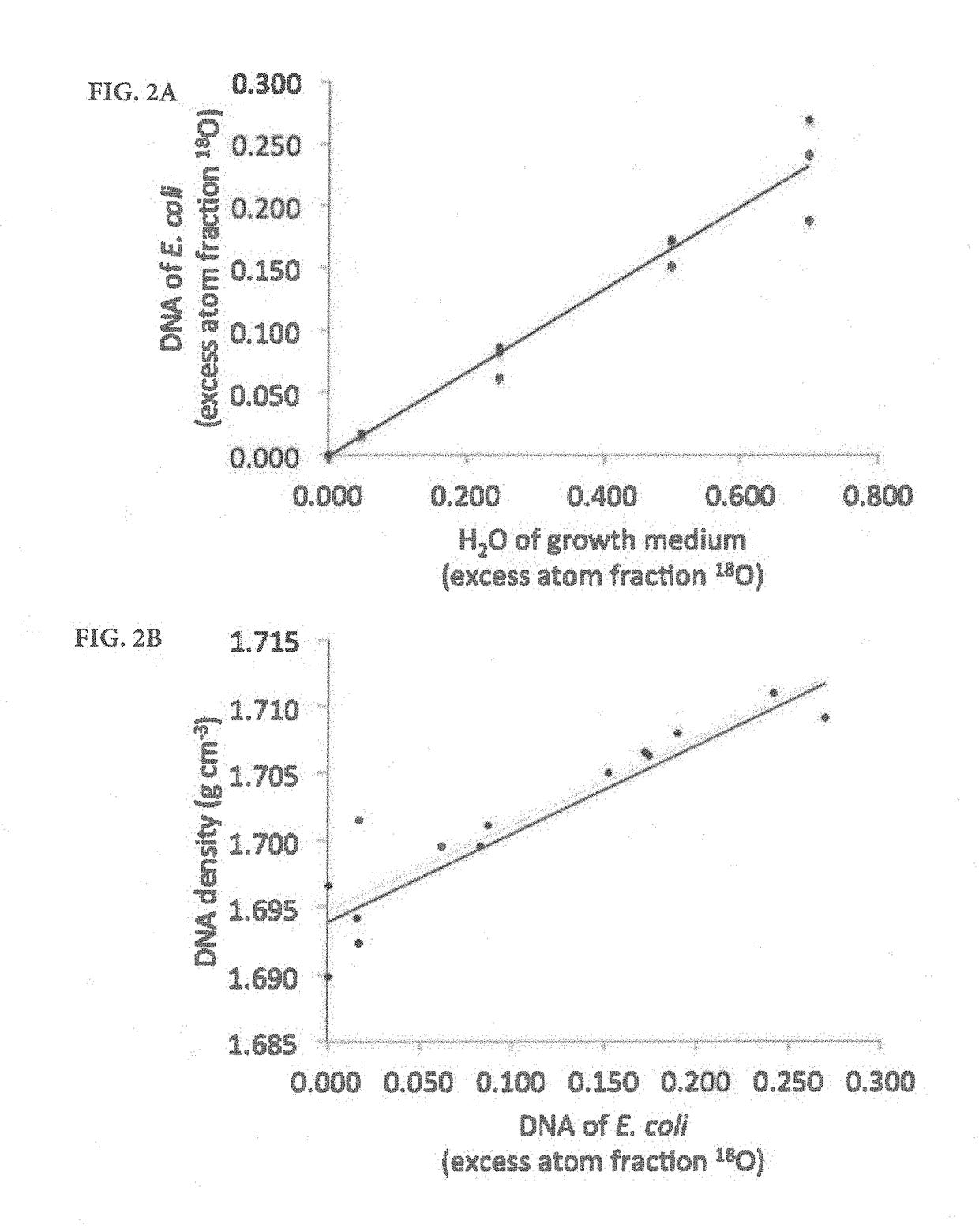Quantitative substrate utilization in microbial ecology using stable isotope probing
a technology of stable isotopes and microorganisms, applied in the field of quantitative measurement of substrate utilization in microorganisms using stable isotope probing technology, can solve the problems of inability to provide quantitative measures of assimilation rate, inability to imagine a more incisive concept for linking elements, and weak understanding of how individual microbial taxa affect ecosystem processes like element cycling
- Summary
- Abstract
- Description
- Claims
- Application Information
AI Technical Summary
Benefits of technology
Problems solved by technology
Method used
Image
Examples
example 1
bations and DNA Extractions
[0057]The sample processing scheme, from soil collection, nucleic acid extraction, and centrifugation to data analysis, is summarized in FIG. 1. Soil (0 to 15 cm) was collected in November 2012 from a ponderosa pine forest meadow, located on the C. Hart Merriam Elevation Gradient in northern Arizona (35.42°N, 111.67°W; http: / / nau.edu / ecoss / what-we-do / future-ecosystems / elevation-gradient-experiment / ). Soil was sieved (2-mm mesh), left to air dry for 96 h, and then stored at 4° C. before the experiment started. Amounts of 1 g of soil were added to 15-ml Falcon tubes and adjusted to 60% water holding capacity, incubated for 1 week, and then allowed to air dry for 48 h prior to the addition of isotopes. Samples were incubated for 7 days.
[0058]During the incubation, samples received 200 μl of water per gram of soil or a glucose solution at a concentration of 500 μg C / g soil in the following isotope and substrate treatments (n=3 for each): treatment 1, water at ...
example 2
ure Studies
[0083]To verify the predicted relationship between increased density and atom fraction excess, experiments were conducted with a pure Escherichia coli culture. The E. coli (strain HB101, GC content 50.8%) culture was shaken at 100 rpm for 8h at 37° C. in Luria-Bertani (LB) broth that was prepared with a mixture of natural abundance and 18O water to achieve five 18O enrichment levels (natural abundance, 5, 25, 50, and 70% atom fraction 18O). Genomic DNA was extracted in triplicate using the PowerLyzer UltraClean microbial DNA isolation kit according to the manufacturer's instructions (Mo Bio Laboratories, Inc., Carlsbad, Calif.). Pure cultures of two additional strains of bacteria selected for low GC content (Staphylococcus epidermidis ATCC 49461, 32.1%) and high GC content (Micrococcus luteus ATCC 49732, 73%) were also grown. S. epidermidis was grown for 24 h on brain heart infusion agar at 37° C., and M. luteus was grown with LB agar at 23° C. These cultures were grown w...
example 3
Carbon Use Plasticity, Phylogenetic Diversity and the Priming of Soil Organic Matter
Materials and Methods
[0092]Soil (0-15 cm) was collected from a ponderosa pine meadow (35.41541N, −111.6695W, 2344 m elevation), vegetated with patches of grass on the C. Hart Merriam elevation gradient in November 2012. Soil from this site was previously determined to be a Sponseller clay loam with 36.1% clay, 43.5% silt and 20.4% sand. This soil was also characterized as having 2.6±0.1% C content, 0.12±0.01% N content (Dijkstra P, Ishizu A, Doucett R, Hart S C, Schwartz E, Menyailo O V et al. (2006). 13C and 15N natural abundance of the soil microbial biomass. Soil Biol Biochem 38: 3257-3266) and a relatively neutral pH of 6.8. Soil was sieved through 2 mm mesh, and air-dried at room temperature for ˜24 h before initiation of the experiment. Soils were dried to enable the addition of isotopically labeled solutions without saturating the soil.
[0093]To quantify priming, 40 g dry weight soil was weighe...
PUM
| Property | Measurement | Unit |
|---|---|---|
| Fraction | aaaaa | aaaaa |
| Time | aaaaa | aaaaa |
| Time | aaaaa | aaaaa |
Abstract
Description
Claims
Application Information
 Login to View More
Login to View More - R&D
- Intellectual Property
- Life Sciences
- Materials
- Tech Scout
- Unparalleled Data Quality
- Higher Quality Content
- 60% Fewer Hallucinations
Browse by: Latest US Patents, China's latest patents, Technical Efficacy Thesaurus, Application Domain, Technology Topic, Popular Technical Reports.
© 2025 PatSnap. All rights reserved.Legal|Privacy policy|Modern Slavery Act Transparency Statement|Sitemap|About US| Contact US: help@patsnap.com



